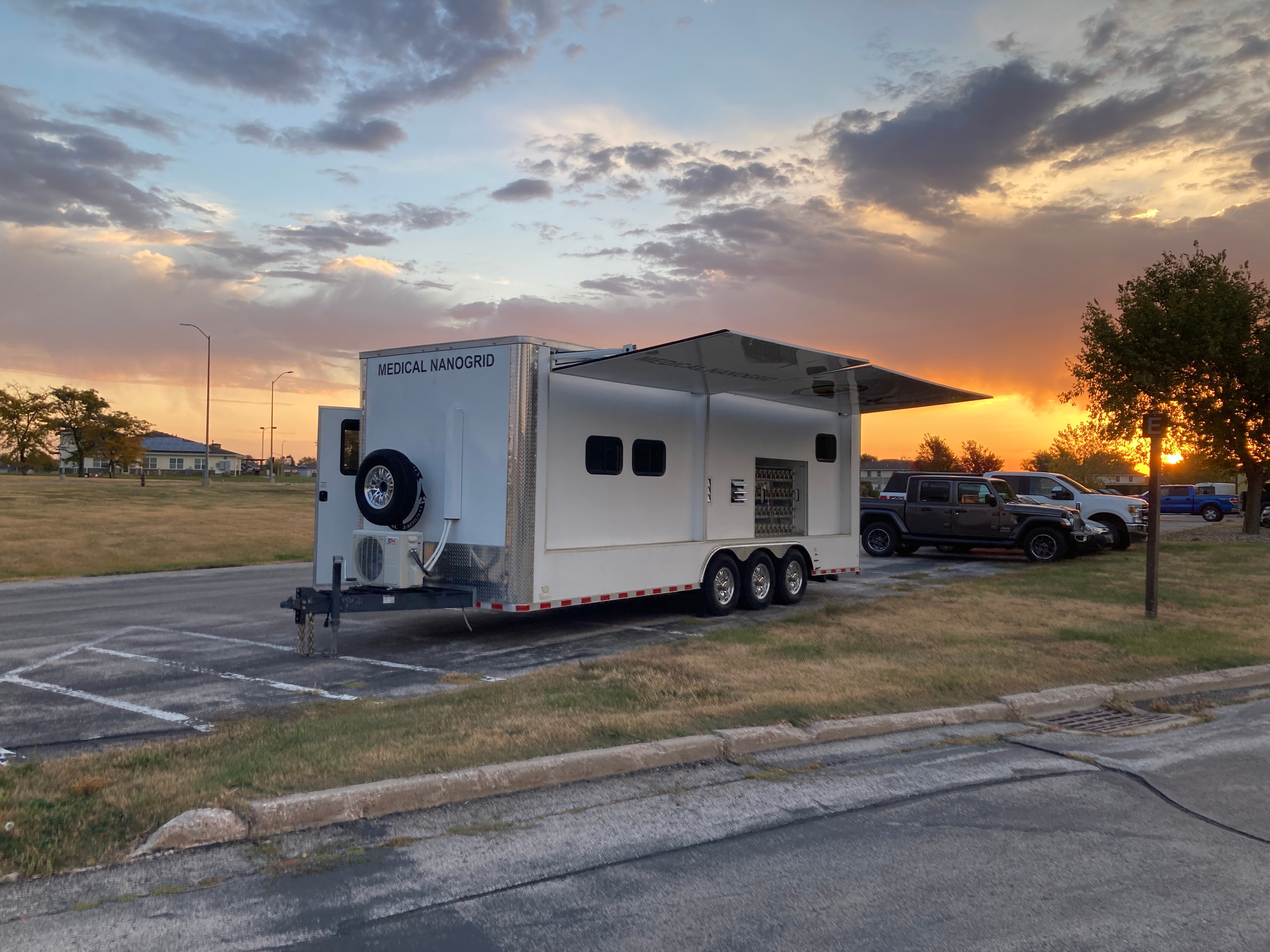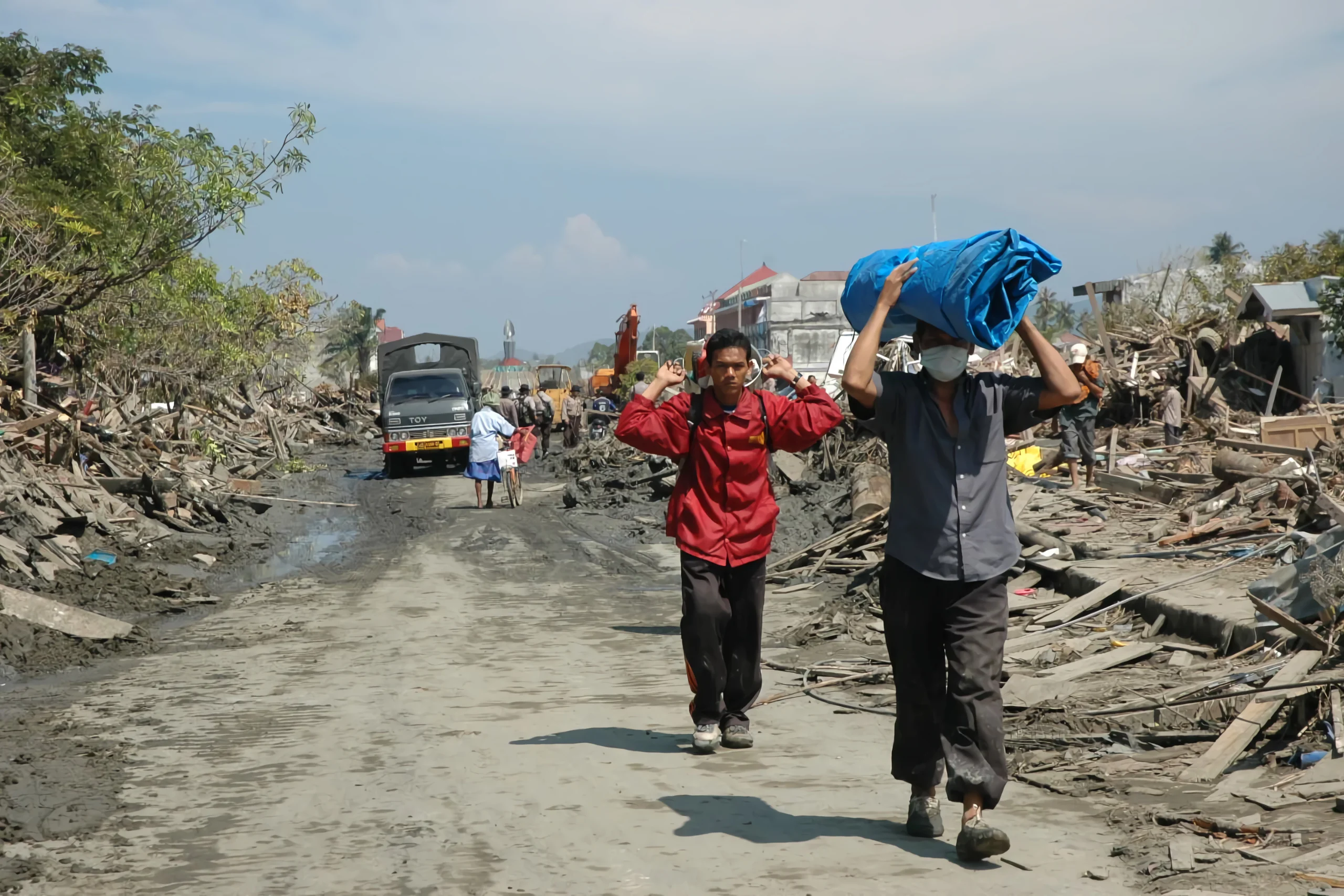What Is Energy Resilience? Why It Matters More Than Ever

Excerpt
Energy resilience has become one of the most urgent priorities of our time as extreme weather, aging infrastructure, and cyber threats strain traditional power systems. It’s about more than backup generators—it’s about building energy systems that can adapt, recover, and keep essential services running no matter what happens. From microgrids and renewables to innovations like Sesame Solar’s Mobile Nanogrids, this guide explains what energy resilience means, why it’s crucial, and how clean, mobile technologies are powering a more secure and sustainable future.
In an era marked by extreme weather and aging infrastructure, the term energy resilience has moved from policy discussions to household conversations. It's no longer just a buzzword tossed around in academic circles or government reports. Energy resilience is now a critical priority for communities, businesses, and entire nations seeking to maintain continuity and security in an increasingly uncertain world.
But what exactly is energy resilience? Why does it matter so much today? And how can emerging technologies like Sesame Solar’s Mobile Nanogrids play a role in helping us build a more energy resilient future?
Let’s break it down.

What Is Energy Resilience?
Energy resilience refers to the ability of an energy system to anticipate, absorb, adapt to, and rapidly recover from disruptions. These disruptions can originate from a wide range of sources, including natural disasters such as hurricanes, wildfires, and floods; cyberattacks on critical infrastructure; supply chain disruptions; or even fuel shortages.
At its core, energy resilience is about ensuring that power is available when and where it’s needed—especially during emergencies. It means designing systems that can function independently when traditional energy grids fail. It’s not just about bouncing back. It’s about maintaining essential services without missing a beat.
Why Energy Resilience Matters
When the power goes out, everything changes. Hospitals scramble to keep patients alive. Emergency response stalls. Water treatment plants grind to a halt. Communication systems fail. For communities already vulnerable, like those in remote locations or disaster-prone areas, these interruptions aren’t just inconvenient; they’re life-threatening.
Here’s why energy resilience is more important than ever:
1. Extreme Weather
Weather-related disasters are increasing in frequency and intensity. In 2023 alone, the United States experienced over 25 billion-dollar weather disasters, from hurricanes to wildfires. These events often knock out traditional utility infrastructure for days or even weeks. An energy-resilient community can operate independently of the grid, keeping critical services online.
2. Aging Infrastructure
Many parts of the U.S. electric grid are outdated and vulnerable to attack. As infrastructure ages and demand grows, failures become more frequent. Energy resilience includes the modernization and decentralization of energy systems to prevent cascading failures.
3. Security Risks and Cyber Threats
Energy infrastructure is a prime target for cyberattacks and sabotage. In December 2022, the Department of Energy reported a surge in cyber intrusions targeting utility systems. A resilient energy system is decentralized and less reliant on single points of failure, making it harder to take down.
4. Equity and Community Empowerment
Energy resilience is also an issue of equity. Marginalized communities often suffer the most during power outages and disasters. Investing in local, clean energy systems, such as Sesame Solar’s Mobile Nanogrids, helps democratize access to power, reduce dependency on fuel delivery chains, and give communities more control over their energy future.

How Energy Resilience Is Built
Creating a resilient energy system involves more than just installing backup generators. It’s a holistic approach that integrates technology, policy, community engagement, and environmental stewardship.
Microgrids and Nanogrids
Microgrids and nanogrids are small-scale, localized energy systems that can operate independently or in coordination with the main grid. Sesame Solar’s Mobile Nanogrids are a leading example, offering solar + hydrogen power solutions that are mobile, rapidly deployable, and fuel free.
These self-sustaining units can be deployed within hours to disaster zones, healthcare sites, telecom hubs, or remote field operations. When the main grid fails, they don’t. That’s the essence of resilience.
Energy Storage
Storage is essential for resilience. Batteries allow energy generated from solar or other renewables to be saved and used when sunlight isn’t available. Sesame Solar’s Nanogrids come equipped with lithium battery storage, ensuring 24/7 access to power even in the dark.
Decentralization
Decentralizing energy production—distributing generation across various points rather than relying on centralized plants—reduces risk and increases flexibility. It prevents entire regions from going dark due to one point of failure.
Renewables Integration
Solar and hydrogen offer clean, renewable alternatives to fossil fuels. They not only lower emissions but also reduce reliance on vulnerable fuel supply chains during times of crisis. In a world facing increasing oil volatility, renewable-based systems offer stability.

Energy Resilience in Action: A Community Lifeline
Consider a coastal town that’s just been hit by a major hurricane. Power lines are down. The main substation is flooded. The hospital is running on a limited generator. But in the parking lot, a Mobile Nanogrid from Sesame Solar hums quietly, powered by sunlight and green hydrogen. It’s running satellite internet, powering refrigeration for medicines, and even charging emergency radios. It’s a literal lifeline: clean, quiet, and dependable.
This isn’t a future scenario. This is happening today in areas vulnerable to extreme weather and resource scarcity. The key is readiness. And readiness depends on energy resilience.
What Role Does Sesame Solar Play?
Sesame Solar is leading the charge toward energy resilience by offering off-grid, solar-powered Nanogrids that can be deployed anywhere, anytime. Our systems:
- Require no connection to the utility grid
- Use clean energy from solar and hydrogen
- Are designed for rapid deployment—within 15 minutes
- Provide weeks of autonomous operation without refueling
- Can power telecom, water purification, medical devices, command centers, and more
From island nations rebuilding after hurricanes to local governments preparing for the next wildfire season, Sesame’s mobile energy systems provide security, independence, and resilience.
Key Takeaways
- Energy resilience is the ability to maintain or quickly restore power during and after disruptions.
- It is vital due to weather disasters, infrastructure vulnerabilities, cybersecurity risks, and concerns about energy equity.
- Microgrids, renewable energy, and storage solutions are core components of resilient systems.
- Sesame Solar’s Mobile Nanogrids deliver clean, mobile, and autonomous power to those who need it most.
- Building resilience isn’t optional—it’s essential for a secure and sustainable future.

Frequently Asked Questions
1. How is energy resilience different from energy reliability?
While they’re related, energy resilience and energy reliability are not the same. Reliability refers to how consistently the power stays on during normal operations. It’s about minimizing routine outages. Resilience, on the other hand, focuses on how a system performs under stress, during disasters, attacks, or fuel shortages. A reliable system might fail during a hurricane. A resilient system is designed to survive and recover quickly from such disruptions. In today’s changing risk landscape, both reliability and resilience are essential, but resilience is the trait that ensures survival when the unexpected happens.
2. Can small businesses benefit from energy resilience solutions?
Absolutely. Small businesses are often hit the hardest during blackouts. Without backup power, they may lose customers, inventory, and even their reputations. Investing in energy resilience—such as portable solar-powered systems, battery storage, or working with community microgrids—ensures business continuity. Sesame Solar’s Nanogrids, for example, can provide small businesses with a self-sustaining energy source that reduces their reliance on the grid and keeps them running even when local utilities are down. It’s not just about surviving a disaster. It’s about thriving through it and coming out stronger.
3. Is solar energy alone enough to ensure energy resilience?
Solar is a powerful component of resilient energy systems, but it isn’t enough on its own. The sun doesn’t always shine, which is why energy storage and hybrid systems matter. Pairing solar with batteries, and in some cases hydrogen or wind, ensures power is available even at night or during long cloudy periods. Systems like Sesame Solar’s combine solar panels with battery storage and hydrogen, creating a reliable energy supply that works around the clock. Resilience comes from the system, not just the source.
4. What are the first steps communities can take to improve energy resilience?
The first step is assessment. Communities need to evaluate their vulnerabilities: What critical infrastructure needs constant power? How often do outages occur? What energy sources are currently relied upon? From there, local leaders should identify decentralized, renewable, and storage-based solutions that meet those needs. Partnering with companies like Sesame Solar can help accelerate this process by bringing in modular, ready-to-deploy energy systems. Education is also crucial—community members need to understand how resilient systems work, and how they benefit everyone from first responders to local businesses.
If we want to weather the storms ahead—literally and metaphorically—we need to rethink how we power our world. Energy resilience isn’t a luxury. It’s the foundation for a safer, more sustainable future.
And it’s being built today.
